Game Platter, Frederick County
From the USS Maryland Silver Service
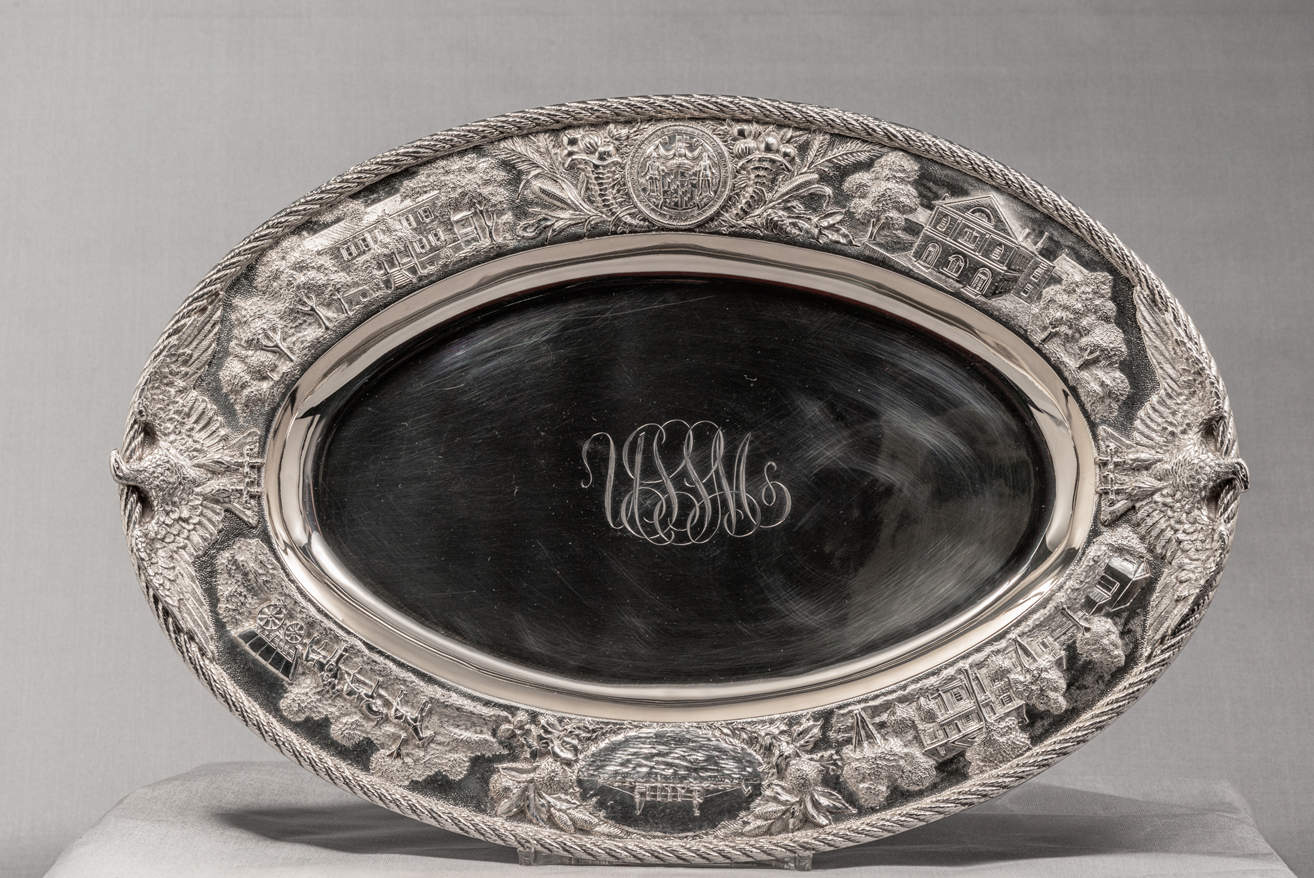
Object: Game Platter, Frederick County
Date: 1906
Medium: Sterling Silver
Dimensions: Overall length (eagle to eagle) 18 1/4"; Overall width, 12 1/2"
Accession number: MSA SC 1545-0924
Frederick County is represented by this game platter, which complements the size and shape of the Allegany County fillet platter. Frederick County was created in 1748 from Baltimore and Prince George's counties; it was probably named after Frederick Calvert, the sixth and last Lord Baltimore.
The majority of the scenes depicted on the game platter relate to Frederick County residents who played notable roles in eighteenth-century Maryland. The cornucopias flanking the Great Seal are laden with pumpkins and are surrounded by bunches of corn and wheat. The Cruiser is flanked by Mulberry sprigs and horse chestnut leaves. As with the other serving platters, the “USSM” monogram is engraved in the center, two eagles are applied to the sides, and the rope border surrounds the perimeter. Scenes across the top (left to right):
1. Prospect Hall (number 69)
Prospect Hall was a brick manor house built by Daniel Dulaney. Jr. on the highest elevation point in the city of Frederick known as “Red Hill”. Construction began in 1797 and was completed by 1810.
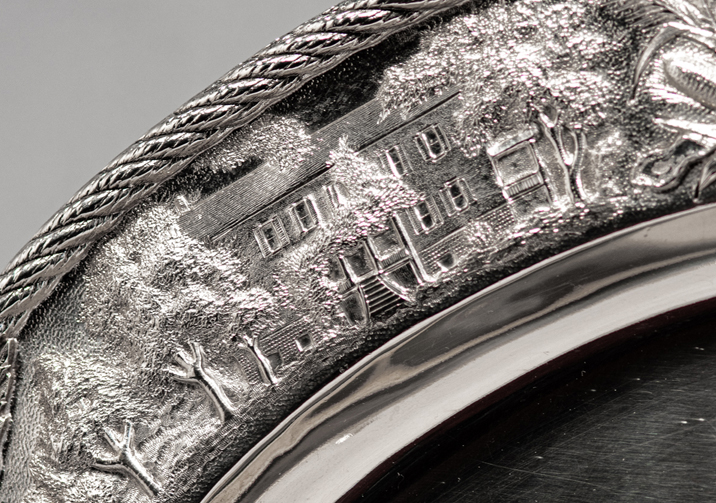
Prospect Hall

3. All Saint’s Church (number 68)
All Saints Church was founded by the Maryland General Assembly in 1742. The scene depicted on the game platter is the second All Saints Church (Episcopal) that was completed in 1814. It was converted into a parish house in 1856 with the construction of the third church.
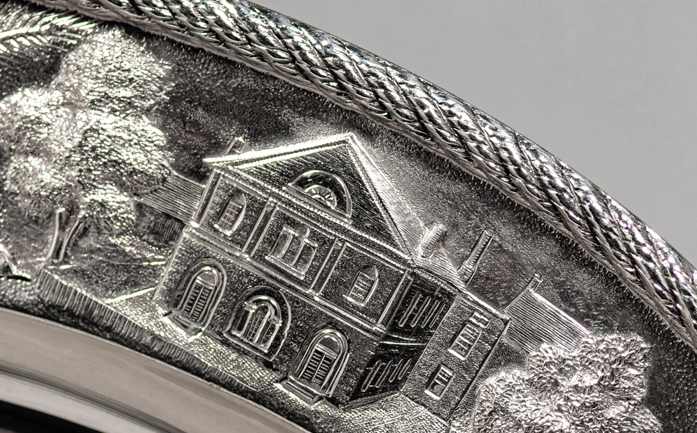
All Saint’s Church

Scenes across the bottom (right to left)
1. Rose Hill (number 67)
Thomas Johnson, Jr., the first governor of Maryland, spent his retirement years at Rose Hill, a Georgian style mansion. Rose Hill was originally built by Johnson’s daughter and son-in-law in 1770. The Maryland Commission on Artistic Property has a tall case clock and a pier mirror owned by Johnson while he lived at Rose Hill. The mirror is currently on display in the Reception Room of Government House.
Johnson is one of Maryland’s and America’s earliest heroes and had a long distinguished career of public service. He was a delegate to the Continental Congress and nominated George Washington to be the commander-in-chief of the Continental Army, Governor of Maryland, 1777-79 (Federalist); Chief Judge, General Court, 1790-91; and Associate Justice, U.S. Supreme Court, 1791-93.
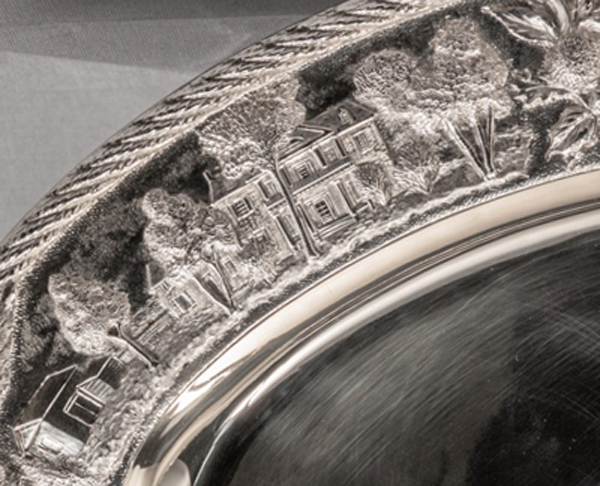
Rose Hill
Johnson is one of Maryland’s and America’s earliest heroes and had a long distinguished career of public service. He was a delegate to the Continental Congress and nominated George Washington to be the commander-in-chief of the Continental Army, Governor of Maryland, 1777-79 (Federalist); Chief Judge, General Court, 1790-91; and Associate Justice, U.S. Supreme Court, 1791-93.

2. USS Maryland Cruiser
3. Conestoga Wagon (number 70)
The conestoga wagon originated in Lancaster County, Pennsylvania in the 18th century. They were the freight cars of the late 18th and 19th centuries and were able to transport about 6 tons of cargo at a time. They were pulled by a team of four to six horses and were a mainstay on the National Road through Western Maryland. An image of a conestoga wagon is also on one of the candlesticks from Garret County.
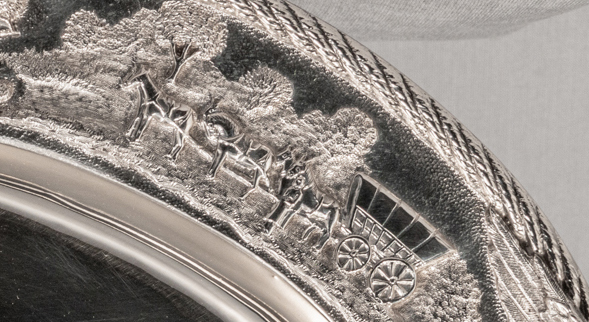
Conestoga Wagon

|
This web site is presented for reference purposes under the doctrine of fair use. When this material is used, in whole or in part, proper citation and credit must be attributed to the Maryland State Archives. PLEASE NOTE: The site may contain material from other sources which may be under copyright. Rights assessment, and full originating source citation, is the responsibility of the user. |
© Copyright August 07, 2024 Maryland State Archives
